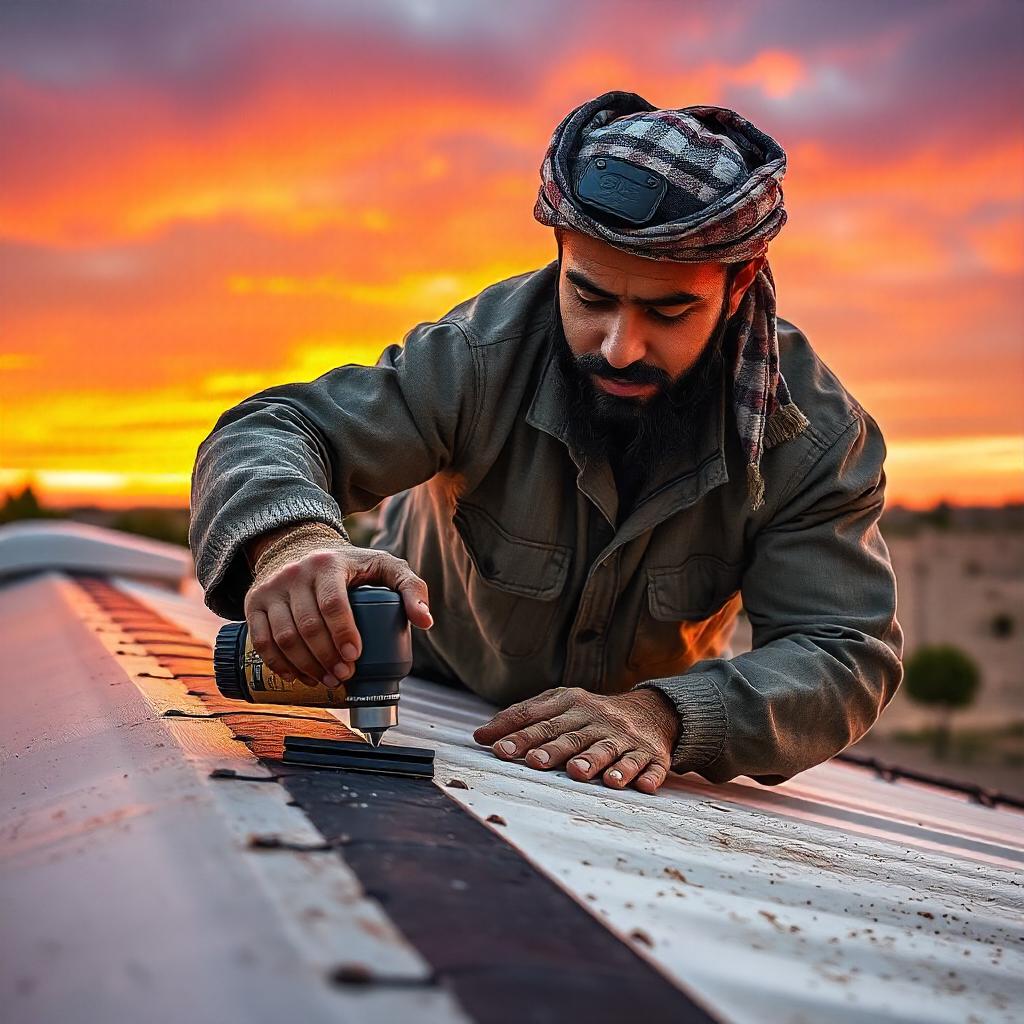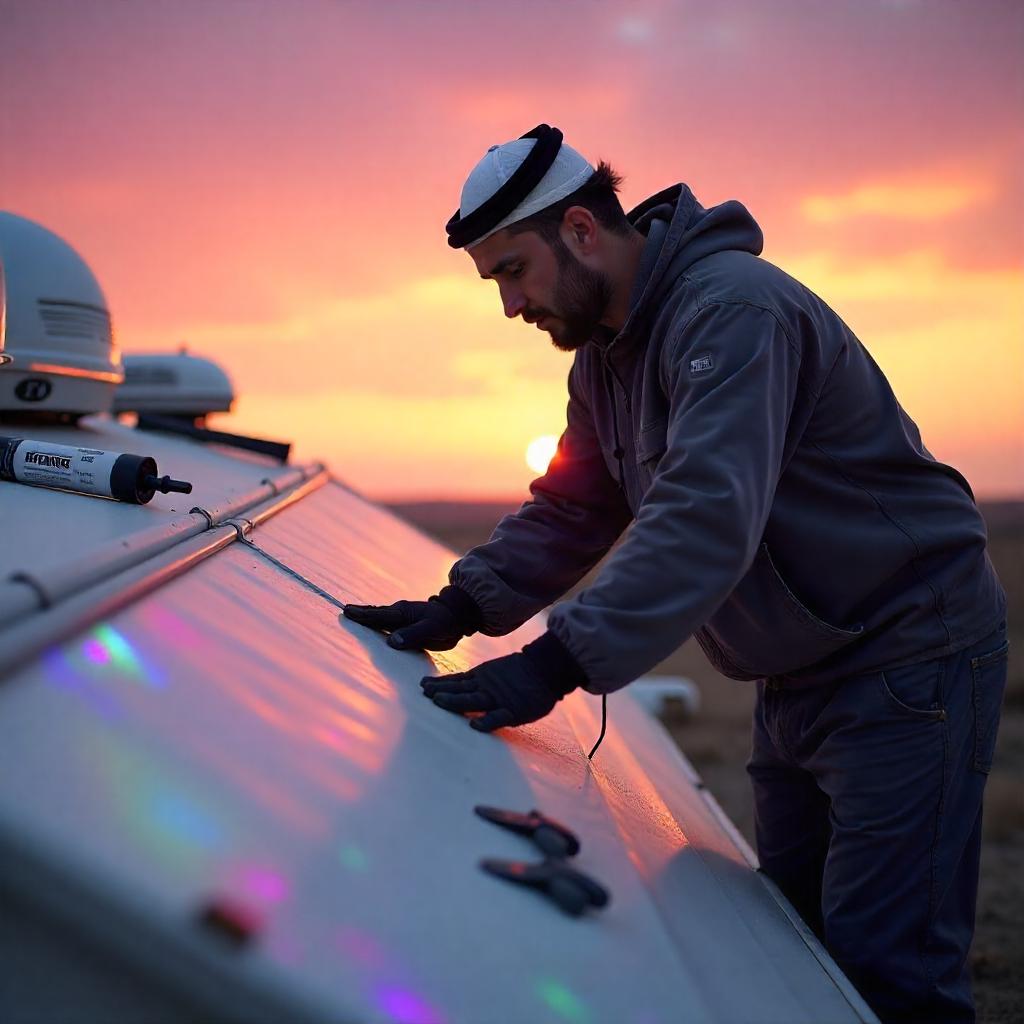Maintaining the roof of your RV is one of the most crucial aspects of RVing since it’s the part that protect you from external conditions. The problem with roof sealant is that it eventually deteriorates, develops cracks, or peels, which in turn, allows water in your RV and leads to water damage. This is something which every owner of an RV should be in a position to handle, as it will help to avoid the costly exercise of having the roof of the RV redone.
In this blog post, you’ll learn everything you need to know about resealing an RV roof through the following guide. No worries, it is easier said than done—read on to find out how! With the use of some equipment, quality materials, and little time, you will be able to protect your investment, your RV roof. Let’s dive into it!
Table of Contents
Why Do You Need to Reseal Your RV Roof?
What happens if you don’t reseal your RV roof?
Any sealant that is used on your RV roof can break down, and if you do not maintain it in good condition you will be left with a situation whereby water starts seeping into the small cracks. If left unattended for some time, the rusting leads to formation of some holes through which water seeps into the building and results to severe interior deterioration. This includes, mold, rotting of wood, and even electrical problems can all be experienced here. It may be one of those small jobs which can save a big headache in the future.
How often should you reseal your RV roof?
It is advised to resurface your RV roof at least once a year since the experts advice so. Still, the frequency of washing will depend on the conditions you are storing your RV in and the weather it faces, and depending on the damages, one may need to wash it more often.
What are the signs your RV roof needs resealing?
Some of them are chalking or flaking of sealant, ponding or evidence of water or moisture infiltration, especially around seams joining different parts of the RV. If you find any of these, then it is high time you reseal the floor.
What Types of RV Roofs Are There?
Rubber (EPDM and TPO)
Rubber roofs are very popular for RVs for example. EPDM is more flexible than TPO rubber, but TPO itself is harder and less easily penetrated by outside objects. The two types call for different types of sealants, therefore making it necessary for anyone to know what type of roof they have.
Fiberglass
Fiberglass roofs are robust and favorite for luxury travel trailers. Being long lasting, they require resealing for safety against uv effects and cracks.
Metal
Metal roofs can mostly be seen in earlier models of RVs. These are pretty tough but it reminds that as in any roof the joint become lined and require resealing.

Reseal RV Roof
Tools and Materials You’ll Need
Whatever you plan on using while resealing should be collected beforehand to avoid a lot of back tracking.
- Roof sealant (Make sure it’s compatible with your RV roof material)
- Caulking gun
- Roof cleaner
- Rubber gloves
- Scraper or putty knife
- Ladder
- Masking tape (for cleaner lines)
- Protective eye gear
Step-by-Step Guide to Reseal Your RV Roof
Step 1: Clean the Roof
The first step towards cleaning your roof is to wash it properly. Cleaning the roof should be done with the help of a roof cleaner that can easily wash away the dirt, debris and in this process, eliminate any peeling seal. For instance, when applying a new coat of sealant it is necessary to work when the surface is clean.
Step 2: Remove Old Sealant
To do this, it is advised that you take some scraper or putty knife and try to take off any old and cracked sealant around the seams, vents and any other roof component. This means that you don’t have to remove the whole lot of them only that there are some which don’t stick well.
Step 3: Apply New Sealant
When the roof is cleaned and the older sealant has been stripped off then it is time to apply the new one. Place the sealant in the caulk gun, and spread it around all the joints, and on the area around any vent or skylight. Also try to level it off and to fill any imperfections or humps.
Tips for a Smooth Resealing Job
Use the right sealant for your roof type
Ensure the sealant that you are using covers the type of roof you have on your home. For instance, whereas EPDM rubber will require a distinct sealant from that of TPO roofs.
Apply sealant on a cool, dry day
Ideally it should be on a day that you feel the weather is a bit moderate; neither extremely hot nor rainy. Ideally, sealants should stick well on to this surface when used when the surface is dry and the climate is moderately warm.
Don’t rush
Do not rush yourself when applying the sealant. Inadequate work results in improper coverage and some portions of the pool surface being left uncoated and that would be counterproductive for the resealing process.
Read Also : How Much Refrigerant Does an RV Air Conditioner Need?
How Long Does It Take to Reseal an RV Roof?
Time for prep and application
It normally can take 4-6 hours to reseal an RV roof depending on the size and type form of sealant you use on your RV.
How long does the sealant take to dry?
Another important step if using sealant is that you will be required to wait for some time so that the material is allowed to cure which takes not less than 24 hours. At this time, it is also recommended to store your RV under a shelter if it can be done to avoid exposure to rain.
Can you drive your RV immediately after resealing?
Perhaps the most important instruction is that it is recommended not to start driving until the sealant has had the chance to cure completely. Of course you don’t want to have any kind of dirt or debris get caught in the sealant as all your work will be in vain.
Maintaining Your RV Roof After Resealing
nspect regularly
It is recommended to check RV roof at least every few months, even if you have resealed it, prior to the long trips. Take the opportunity to time checkups and look for any potential problems before they snowball into more serious issues.
Keep it clean
They should clean their roof after every three months so that the sealant used will not develop thick deposit which will cause cracks or leakage.
Reapply sealant as needed
You might not need to reseal the entire roof each time. Sometimes, just reapplying sealant to worn areas can do the trick.
Cost of Resealing an RV Roof
How much does it cost to do it yourself?
If you’re doing the resealing yourself, expect to spend anywhere from $50 to $200 on materials, depending on the size of your roof and the type of sealant you need.
What does it cost to hire a professional?
If you’d rather leave it to the pros, professional resealing can cost between $500 and $1,500, depending on the size of your RV and the condition of your roof.
Is it worth doing it yourself?
If you’re handy and comfortable working on your RV, resealing the roof yourself can save you a significant amount of money. Plus, it’s a good way to get to know your RV and stay on top of maintenance.

Cost of Resealing an RV Roof
Common Mistakes to Avoid When Resealing
Not cleaning the roof properly
Skipping the cleaning step can cause the new sealant to not stick properly, leading to more problems down the road.
Using the wrong type of sealant
Make sure you’re using a sealant that’s compatible with your RV roof material. Otherwise, you could end up causing more damage than good.
Applying sealant too thickly
While it might be tempting to apply a thick layer of sealant for extra protection, too much can cause it to crack or not cure properly.
Read Also : Electric RV Awnings: Easy Setup, Durability & Features Guide
When Should You Call a Professional?
Major roof damage
Sure enough, if your roof has cracks, tears or water damage in regions that are overly large, this is a sure sign that you require professional help. They should have what it takes to address larger problems as a result of the equipment and learning they got from the coveted position.
Lack of time or confidence
If you do not have the time, or if you do not want too much stress involved, then a professional will do the job well.
Warranty concerns
In case your RV is still under warranty, then; what the manufacturer has to say regarding resealing has to be followed to the letter. Sometimes, if you attempt to do it yourself, the warranty may be null and void.
Conclusion
Sealing the roof of RV is not a very complicated process and it would be helpful if you decide to avoid many problems in the future. By monitoring the performance of your home roof and performing ANY resealing as soon as possible you do not incur costs of water damage, mold, etc. If you want to learn how to reseal your RV yourself or if you’d rather hire a professional, incorporating resealing into your RV maintenance plan will sure make your recreational vehicle leak-free for many years. Happy travels!
